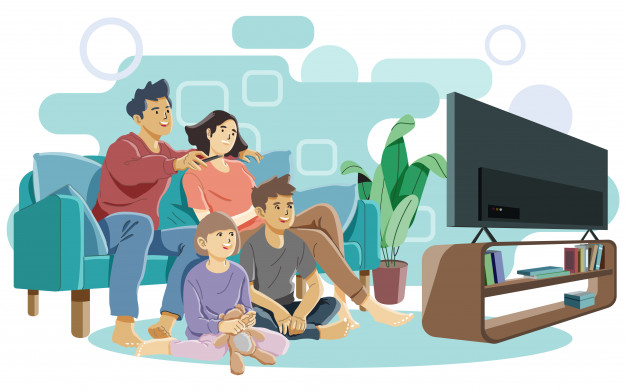
There was a study out earlier this month claiming that Americans watch more “streaming” than traditional broadcast and cable.

Since that’s not actually the case, the authors of the study threw short-form video like TikTok, Instagram and YouTube into the “streaming” bucket. And predictably the non-trade press glommed onto it because well, who doesn’t like a good “TV is Dead” headline.
(Editor's note: Next TV was among those who bit hard on this eMarketer/Insider Intelligence report, which has since been taken down from the research company's website.)
False narratives aside, it does raise the question of where the line is between “TV” and “video,” and whether they’re interchangeable enough to actually validate the premise of the study.
Traditionally, the line has been drawn with subjective rather than objective criteria: “High production value video content of 20 minutes or longer” is the definition I’d give to any client who asked.
Only, “high production value” is a squishy term, especially now that the cost of shooting and editing high quality video has come down, and there’s more and more of what we used to call “Pro-Am” (professional amateur) content that’s created by people who have experience working at mainstream TV and movie studios but are creating projects (web series or short films) on their own.
Twenty minutes can be a good marker, but it’s also an arbitrary one.
NEXT TV NEWSLETTER
The smarter way to stay on top of the streaming and OTT industry. Sign up below.
Is an 18-minute short film that’s posted to YouTube, but shot with high end digital cameras, and the same sound, make-up and lighting design as a traditional TV series still just a web video? Would two extra minutes push it into “TV” territory?
At the moment, this is all largely hypothetical, and I don’t see the harm in admitting that there’s a gray area for those rare instances where a show is on the bubble.
There’s a bigger question inside all this though, which is whether platforms like TikTok and YouTube actually compete with TV, at least in the minds of consumers.
It’s easy to point to stats on how younger viewers spend more time watching short form video on their phones than they spend watching traditional or streaming TV shows.
The question is do they regard it as the same activity -- watching video -- or do they distinguish between short-form mostly mobile platforms and long-form primarily TV set based platforms?
I’ve yet to see any good research on this (it may be out there), but my gut says they consider them two different activities in the way that reading a newspaper article and reading a book are both still “reading” but, also, distinctly different activities, often done for different reasons under different contexts.
Or, to give it a more real world framing, no one says, “What should we watch tonight, White Lotus ... or TikTok?
Remember MCNs?
An important clue may come from the career trajectories of many creators who were around during the early 2010s heyday of the MCN.
MCNs (multi channel networks) were supposed to be the New New Thing back then. They were, for those of you who don’t remember, curation channels that aggregated content from somewhat related genres as a way to both drive traffic and make discovery easier.
They were billed as a boon to advertisers in that they maintained a stable of creators with sizable audiences who would be willing to shill for the right price, or at the very least, run a pre- or post-roll commercial.
Which was all well and good until it wasn’t, and MCNs more or less disappeared from the scene.
It’s worth noting, too, that many (most?) of the YouTube stars from that era seem to have faded into the ether.
If you remember, there was a much remarked upon Variety study done back in 2014 that showed that teens were far more familiar with YouTube stars like Smosh and PewDiePie than they were with Hollywood stars like Steve Carrell and Jennifer Lawrence.
This led to the expectation that all those YouTube stars would become Hollywood stars, that they would soon be headlining movies and TV series.
Which, of course, never happened.
We still don’t know if the next generation of social media stars, acts/brands like MrBeast, will have a similar trajectory, but it seems fair to conclude that the fan base saw those earlier YouTube acts as both a different medium than television, and, quite likely, an artifact of their teenage years, something they eventually grew out of.
It’s something to keep an eye on though -- is short-form social video the latter day equivalent of Nick at Nite and boy bands, or is it a habit that will follow today’s Zoomers into adulthood?
If you recall (I am asking you to do a lot of remembering here, I know), there was an argument made at the time of the MCN ascendancy that even in the 1970s and 80s, teens and twenty-somethings never watched a whole lot of TV -- they were busy socializing -- and that once they settled down and had families, they’d become more frequent and consistent viewers.
That seems to be happening, too. Perhaps not so much with the old-school pay TV bundle, but with streaming services and long-form TV in general.
TikTok, Instagram and YouTube are competition for TV, or more accurately, for the amount of time viewers have available to watch TV. Consumers don’t really pay much attention to whether they’re watching their favorite series via a streaming service or via a set-top box -- it’s just TV.
What it is not though, is social video, which is its own unique activity and watched when the viewer is in a different state of mind.
Which is why I’d conclude it does not, in fact, belong in the “TV” bucket, but rather, the “media people consume instead of watching TV” bucket.
For consumers, TV is TV no matter how it is delivered, and while TikTok videos may be quite popular, they're just not television.
Alan Wolk is the co-founder and lead analyst for media consultancy TV[R]EV
